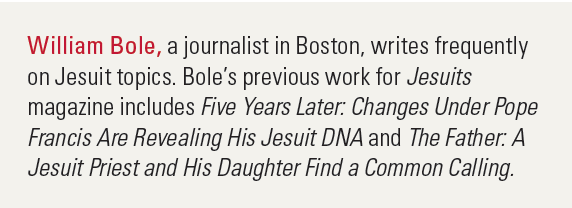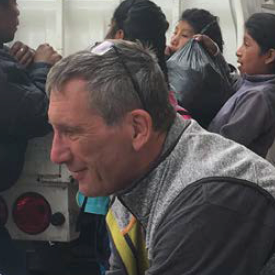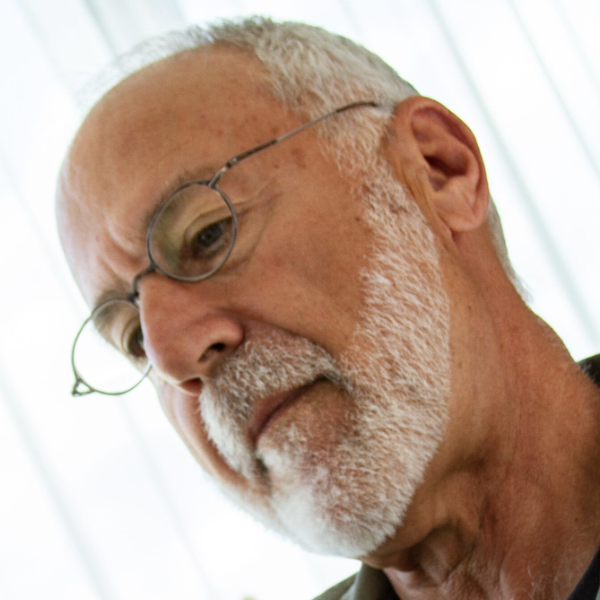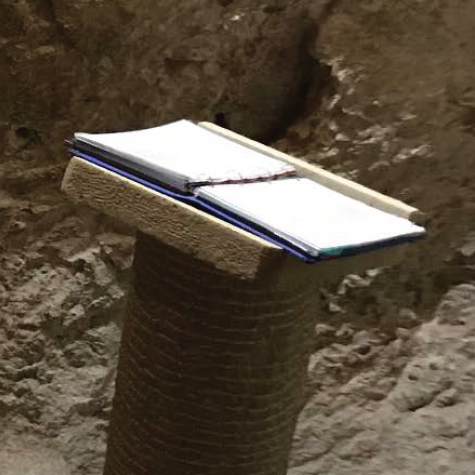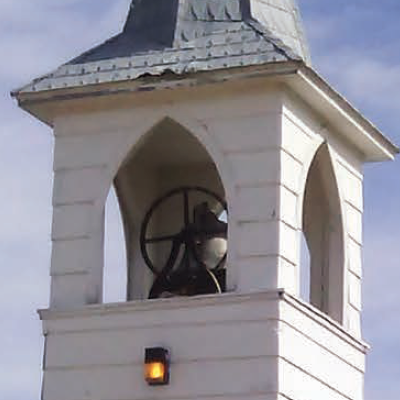
By William Bole
Jesuit Parishes Carve Out a Distinct Role
It was an early evening in March of 2013, and the world was learning that an obscure cardinal from Argentina had been elected pope. In Richmond, Virginia, members of Sacred Heart Church—an overwhelmingly Latino congregation— were sending up cheers. A woman strode up to the pastor of this Jesuit parish, and exclaimed, “Father, Father, one of us made pope!”
“Yes,” replied Fr. Shay Auerbach, SJ, thinking he knew what she meant. “A Latin American.”
“No,” said the parishioner, correcting him—“a Jesuit!”
Fr. Auerbach relates this anecdote about the election of Francis, the first Jesuit pope, and he does so to illustrate something else. Whether they’re serving immigrants in Richmond, young professionals in New York, or others in settings ranging from Toronto’s inner city to the Pine Ridge Reservation in South Dakota, Jesuit parishes are different. They share a particular sense of identity, stemming from the distinct blend of religious sensibilities and spiritual practices that Jesuits refer to unassumingly as “our way of proceeding.”
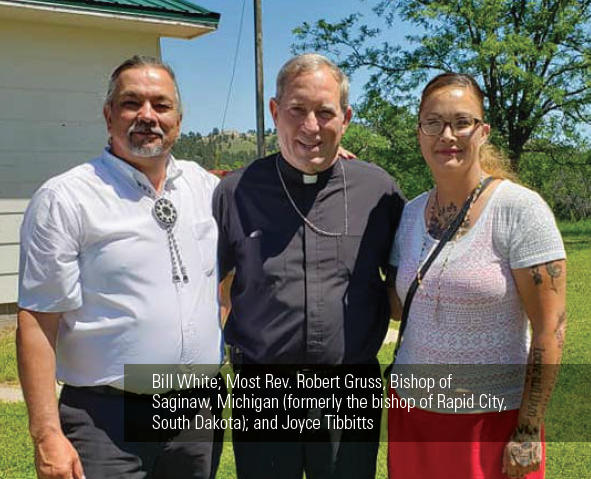
“People now realize there’s something unique about being a Jesuit parish,” California parishioner Dino Rufo says of his parish, St. Ignatius Loyola in Sacramento. There, the church has brought parishioners deeply into the treasury of meditations and practices that comprise the Spiritual Exercises of St. Ignatius of Loyola, to the point where these lay persons, Rufo included, are lining up to serve as trained spiritual directors.
The Society of Jesus and its institutions are known widely, but as Fr. Dan White, SJ, points out, “People don’t think of Jesuit parishes. They’re not what we’re known for.” Fr. White is pastor of St. Francis Xavier College Church, a full-service parish at Saint Louis University with a registered membership of around 850 families. “When most people think about Jesuits, they think of teaching” at high schools and universities, he notes.
Still, there are 67 Jesuit parishes in the United States and Canada, and increasingly the Jesuit provinces are looking to their parishes as one way to animate the contemporary Jesuit mission. That mission includes, among other priorities, collaborating with the laity, sharing Ignatian spirituality, and practicing a “faith that does justice” through solidarity with the marginalized and other advocacy. Father White has a straightforward explanation of what a Jesuit parish does, and how it’s different from other parishes: “It’s one that is doing the mission of the Society of Jesus in a parish setting. That’s the difference.” In a light aside, he also says the parishes are different from the famed Jesuit universities in this way—“You don’t have to pass a test to get in.” The parishes are open to all.
Conventionality is not in the operating manual of these parishes. In a 1979 document titled “Some Guidelines for the Parish Apostolate,” the beloved Fr. Pedro Arrupe, SJ, Superior General of the Society of Jesus from 1965 to 1983, stressed that a Jesuit parish “should not merely be a place where sacraments are administered to a small number of practicing Christians. Rather, it should be a center where the Word of God is preached and inspires deep probing; where there is a sense of openness to local social, economic, and cultural problems.” Fr. Arrupe, whose cause for beatification and canonization opened recently in Rome, added: “The parish should be a meeting place for everybody in the district.”
It’s no surprise, then, that members of Jesuit parishes tend to be parishioners by choice, not by geography. Some parishioners travel long distances—much like those at St. Francis Xavier College Church, who travel from no fewer than 60 zip codes in metropolitan St. Louis— to reach their destination parish. Many of these seekers already have some familiarity with the Jesuits, typically as alumni of Jesuit schools rather than as parishioners of other Jesuit churches. And, one thing they’ll notice early on is that Jesuit parishes have a different pastoral feel.
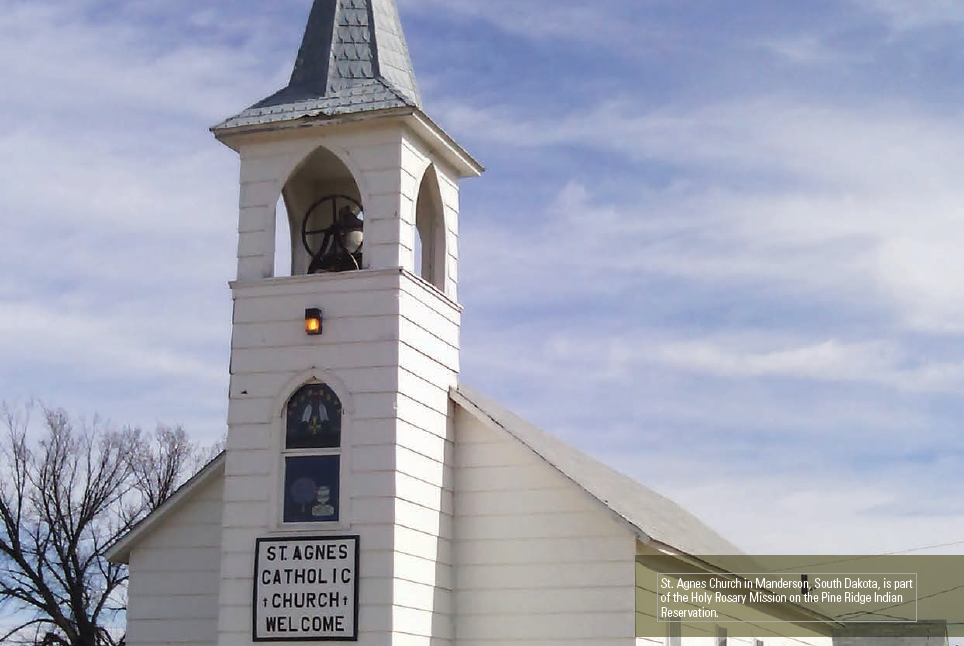
“I think there’s a greater informality in our parishes,” says Fr. John Sullivan, SJ, pastor of Our Lady of Lourdes in downtown Toronto, a parish teeming with immigrants from the Philippines, India, Sri Lanka and other lands. “You could see it at Mass, in the relationships between the congregation, the people and the Jesuit priests. We try to be more with the people, rather than having a distance between us and the people. We try to be in the mix.”
Likewise, Catherine O’Hagan Wolfe, of the Church of St. Francis Xavier in New York City, says that when first introduced to the church close to a decade ago, she felt a pull toward the kind of place “where people introduce themselves to whoever is sitting next to them, at the beginning of Mass. Everyone sings—it’s infectious. Folks applaud.” Wolfe, an attorney in Manhattan who graduated from the College of the Holy Cross in Massachusetts and is now chair of Xavier’s pastoral council, referred to these and other qualities as “threshold manifestations of a healthy spiritual community.”
Jesuit parishes are also known for going with the flow of different cultural expressions. Or, in the words of guidelines issued by the U.S. Jesuits nearly two decades ago, liturgical celebrations should be “characterized by a spirit of creativity and a willingness to adapt to the cultural realities of the communities we serve.” That’s the spirit at Holy Rosary Mission, which oversees the full array of pastoral ministries on the Pine Ridge Reservation in South Dakota. Ministering to the Lakota people across a sprawling expanse of 3,500 square miles, Holy Rosary and its smaller parishes offer liturgies that incorporate Native American customs such as solemn drumming and purification rituals involving the use of feathers and smoke.

Then there are the wakes and funerals. They could go on for nearly a week, with a team of trained lay ministers often presiding over the rituals, at times flanked by a traditional medicine man. This is customary for members of the Lakota tribe, who also receive ritual gifts such as blankets when all is done. “And you feed them after every service during the week. These are full meals. They’re not finger food,” says Joyce Tibbitts, who coordinates ministries on the reservation. As the lead catechist, she also has the same job once held by Nicholas Black Elk, the iconic Lakota (Sioux) medicine man whose cause for canonization was launched two years ago.
Tibbitts makes it clear that the cultural accommodations are not really about flexibility. They’re about mission, which includes what Pope Francis calls a “culture of encounter,” a dialogue among cultures. She also invokes Ignatian spirituality. “Ignatius taught us that we need to see God in all things, in all people and cultures. The principles of Ignatian spirituality definitely intersect with Lakota spirituality,” she explains, citing shared themes such as gratitude and God’s activity in the natural world. “The Jesuits have made it so that our people can embrace Catholicism with an open heart.”
Indeed, the spiritual journey goes to the heart of parish ministry, Ignatian-style. It’s what people are seeking when they find a Jesuit parish. “I wanted to live my faith life with a little more intentionality — that whole magis thing,” explains Wolfe, the parishioner in New York, using the Latin word for “more” or “greater” popularized by Jesuits. Her faith became more intentional partly by joining the Church of St. Francis Xavier’s “Lay Spirits” program, in which groups of parishioners commit themselves to getting together regularly for nine months to explore spirituality and learn better how to discern God’s presence in their lives.
In Sacramento, St. Ignatius Loyola Parish took the bold step of launching two years ago the Center for Ignatian Spirituality. The center brings to the laity such robust Ignatian practices as the 19th Annotation, also known as “the Spiritual Exercises in Everyday Life,” an eight-month version of the Spiritual Exercises of St. Ignatius of Loyola that emphasizes daily prayer and weekly spiritual direction. Taking a step further, the group is also training lay people to lead such programs at St. Ignatius as well as in other settings such as retreat centers. This past May, 18 lay people earned their certificates in spiritual direction from the center, and one of them was Rufo, a retired attorney.
Although a graduate of Saint Joseph’s University, a Jesuit institution in Philadelphia, Rufo recalls that his prayer life “used to be hit or miss.” But then he joined St. Ignatius and signed up for a three-day silent retreat during the mid-1990s. “For me, it was a new kind of praying — the contemplation and the meditation. It just felt like a different way of relating to God, a different kind of relationship with Christ, and it got me enthused,” he says. “I’m now more aware of God in my life.” So are many others, he adds: “I think the Ignatian spiritual idea has kind of permeated the parish. It’s amazing to see lay people owning this.”
The inner journey is characteristic of the Ignatian way, but Jesuit parishes don’t leave it at that. In one of North America’s densest neighborhoods, the Toronto parish is connecting spirituality to urgent problems such as poverty, housing, addiction and mental illness. “We don’t separate all that from the life of the parish. It’s our normal way of proceeding,” says Fr. Sullivan of Our Lady of Lourdes. This year, as part of their ongoing spiritual discernment, the pastor and other parish leaders decided they were overly preoccupied with everyday tasks of parish administration and needed to mix more closely with their urban environs. Among other things, Fr. Sullivan started blocking out 45 minutes a day to roam this downtown district that presents both poverty and riches, new immigrants and affluent professionals. In his car one day, he noticed a familiar face on the sidewalk: a young man who had passed his days inside the church, homeless and addicted.
For decades, the Jesuit church has opened its doors to people with such afflictions, giving them a quiet, safe haven from the streets. Recently, however, the parish decided to become more intentional about this daytime outreach. In a spirit of “accompaniment” (a keyword in the contemporary Jesuit lexicon), parish ministers and others began finding out the names of these people, learning their stories, encouraging them to get help and accompanying them to appointments. The young man in question, who had attended the parish as a child with his immigrant family, no longer lurks in the back pews on weekdays: he’s well on the road to sobriety with an apartment of his own. Fr. Sullivan spotted him walking down a street, well attired and interacting with others. “You could see him now becoming his own person. You could see God’s fidelity to him, how God has been working through him and others to get him out of a very difficult place,” the pastor says.
Whether it’s reaching out to the dispossessed or any other parish undertaking, collaboration with the laity is viewed as a must. A glance at almost any Jesuit parish bulletin is instructive: During a mid-summer week in Manhattan, St. Francis Xavier’s bulletin listed 18 “parish happenings” sponsored by groups ranging from young adults and Catholic lesbians to the Xavier Immigration Initiative. “All of that is lay-run with the support of the Jesuits,” Catherine Wolfe underlines.
The collaboration runs deep. “We try to learn very hard from, and with, the people we serve,” says Fr. Auerbach in Richmond, “rather than telling them what we’re going to do. I think that’s typical of Jesuit parishes.” As to the struggling Latin American immigrant community that congregates at Sacred Heart Church, he says: “The parish is theirs.”

